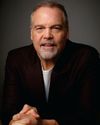CATEGORIES
Categorías
Últimas historias

SIEMENS SLASHES 6,000 JOBS: AUTOMATION AND EV CHARGING UNITS FACE THE AXE
Siemens AG, a titan in industrial engineering, dropped a bombshell on March 18, 2025, announcing plans to cut 6,000 jobs worldwide across its automation and electric vehicle (EV) charging divisions.

RESIDENT EVIL 3 LURCHES ONTO IPHONE, IPAD, AND MAC: HORROR GOES MOBILE
Capcom has unleashed a chilling treat for survival horror fans, bringing Resident Evil 3 to iPhone, iPad, and Mac on March 18, 2025, as announced via the App Store.

Mac Studio
THE ULTIMATE PRO DESKTOP PUSHED EVEN FURTHER WITH THE M4 MAX CHIP

APPLE UNVEILS REQUIRED IOS 19 AND IOS 20 FEATURES FOR EU COMPLIANCE
Apple faces a sweeping mandate from the European Union, announced on March 19, 2025, to overhaul its mobile operating system with a slate of interoperability enhancements for iOS 19 and iOS 20, as detailed by the European Commission.

ENCRYPTED MESSAGING APPS PROMISE PRIVACY AT GOVERNMENT TRANSPARENCY'S EXPENSE
Encrypted messaging tools-Signal, Telegram, WhatsApp-have carved out a digital sanctuary, pledging to keep your conversations under lock and key.
APPLE WATCH HEALTH FEATURES AND HABIT TRACKING: YOUR WRIST'S BEST ALLIES
The Apple Watch has evolved from a sleek accessory into a powerhouse for health and habit management, blending cutting-edge sensors with intuitive apps to keep users in tune with their well-being.

BEST HOME WORKSTATION FEATURES FOR PRODUCTIVITY: CRAFTING THE PERFECT APPLE-CENTRIC SETUP
Turning your home into a productivity haven starts with a workstation that balances focus, comfort, and quality of life-a space where Apple devices shine and daily routines thrive.

GOOGLE'S $32 BILLION WIZ ACQUISITION: A CLOUD SECURITY POWER PLAY
Google has set its sights on a seismic shift in the cloud computing arena, announcing on March 18, 2025, a definitive agreement to acquire New York-based cybersecurity startup Wiz for $32 billion in cash.

TESLA'S NEW FACTORIES: POWERING CARS AND MEGAPACKS INTO 2025
Tesla is accelerating its manufacturing ambitions with a bold expansion of factories for electric vehicles (EVs) and Megapack energy storage systems, including a freshly announced Megafactory near Houston, Texas.

C1 MODEM SHINES IN SURPRISING BENCHMARK DEBUT
Apple's long-rumored leap into custom silicon took a bold step forward with the unveiling of its first in-house cellular modem, the C1, powering the iPhone 16e, released on February 19, 2025.

Canada's Trump Card
With former central banker Mark Carney succeeding Justin Trudeau as prime minister, has the U.S. president met his match in the trade wars?

AMERICA'S Most Loved BRANDS 2025
THE ULTIMATE MEASURE OF A brand's ability to resonate with consumers is how they make us feel, not just the features their products offer.

State of Love and Trust
Steven Soderbergh blurs the lines between personal and professional in spy thriller Black Bag, its stars tell Newsweek

Ben & Erin Napier Are Reviving an Old Vacation Town That's 'Hiding in Plain Sight'
Design duo Ben, 41, and Erin Napier, , are giving Sebring, Fla., a major 39, an boost in season 3 of their HGTV spinoff Home Town Takeover (Sundays).

THE SOUND OF MUSIC Secrets from the Set
JULIE ANDREWS AND HER CO-STARS SHARE STORIES ABOUT MAKING THE BELOVED MUSICAL

SECRETS From the New Season
THE ACTOR REFLECTS ON WALKING JESUS' PATH IN THE LAST SUPPER

Where Is Sudiksha Konanki? - SPRING BREAK MYSTERY
INVESTIGATORS SEARCH FOR A PREMED STUDENT WHO VANISHED WHILE VISITING THE DOMINICAN REPUBLIC

CAR WASH KILLERS SLAY RAPPER & TOT!
COwardly assassins Adonis Robinson and Jakobie Russell ambushed rapper G$ Lil Ronnie and his daughter in Texas — gunning down the 5-year-old and her father in a broad daylight hit, lawmen say.

KHLOE DONE WITH MOM'S DATING GAMES!
Wants Kris out of her bedroom

HEIGL BITES BACK IN LAWSUIT OVER RESCUE MUTTS
Barks that she's been ruffed up by smear campaign

ELVIS' NURSE HAS LEFT THE BUILDING!
Priscilla heartbroken over death of King's caregiver

Dinner made easy!.
Cheddar-Scallion Cornbread Waffles

UNDERWOOD CAN'T CARRY THE LOAD!
Tenderhearted Idol judge collapsing under pressure

Ben Falcone
Ben Falcone isn’t exactly known for making kid-friendly projects. His films with wife and frequent collaborator Melissa McCarthy are “R-rated quite often, but I do think there’s a certain sweetness that we usually try to hit.”

COSTNER GETS CLOSER AFTER DEMI OSCAR SNUB!
She's the star of his field of dreams

Vincent D'Onofrio
THE ACTOR, 65, STARS ON THE DISNEY + SERIES DAREDEVIL: BORN AGAIN

Growing Together
One year of marriage down, a lifetime to go for the young couple

OVERWORKED CLOONEY COLLAPSES IN THE SACK!
Age & work on B'way debut take a toll

CANNIBAL CON STARVED FOR AMUSEMENT!
'Brain Eater' goes on hunger strike as prison purges his PlayStation

25 THINGS YOU DON'T KNOW ABOUT ME
The Bronx-born rapper leans back and shares some fun facts (including his go-to New York pizza spot!) with Us
